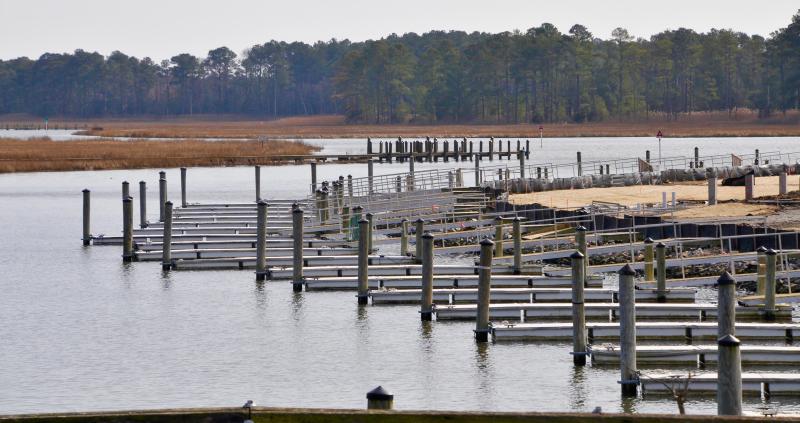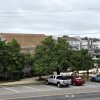New Sussex group to focus on wetlands, buffers
The first meeting of the Sussex County buffers and wetlands working group has been set.
The 13-member group and one consultant, approved by county council at its Feb. 5 meeting, will meet at 2 p.m., Wednesday, Feb. 13, in the county west complex building off Route 113, Georgetown.
“The purpose is to review county code and make recommendations back to county council for consideration,” said Sussex County Administrator Todd Lawson. “We'll need to balance the interests of the environment and property rights.”
“I’m excited,” said Councilman I.G. Burton. “It took a long time to get to this point. The county has changed and there are now additional issues. This is a conversation the county has never had before.” It was Burton who spearheaded an effort to consider changes to the buffers ordinance.
Sussex County's regulations are much less strict than Kent and New Castle counties and nearby states. For tidal wetlands, Sussex County requires 50-foot buffers while Kent and New Castle require 100-foot buffers. New Jersey law mandates 300-foot buffers, and Maryland's designated critical environmental areas have 200-foot buffers.
Sussex County does not require buffers from nontidal waters. Buffers of 50 feet in New Castle County and 25 feet in Kent County are required.
During a meeting last summer, Burton said considering a 100-foot buffer would be a great starting point. “Does 100 feet work for everything? No,” he said. “But we need to look at this with our eyes wide open. We can't keep doing what we are doing now and expect different results.”
He has also proposed an increase from 20 feet to 40 feet for buffers around the boundaries of all subdivisions with more than five lots.
Lawson said the working group will proceed in two phases. During the spring, members will review definitions in the ordinance. “We need to clarify that we are all on the same page,” he said.
During the summer, members will start to write recommendations for updates. Any changes or new ordinances will require public hearings before planning and zoning and county council. Input will also be sought from county council, he said.
Lawson said after the first meeting, he would be able to gather input for future meetings. “We plan an aggressive schedule,” he said. Meetings will be open to the public but public comment will not be accepted.
The Delaware Center for the Inland Bays has gone on record supporting a change to the county ordinance. Executive Director Chris Bason testified that adequate buffers would range from 80 feet to 300 feet and optimum buffers would be from 150 feet to 300 feet.
Committee members include David Baird, Sussex Conservation District; Chris Bason, Delaware Center for the Inland Bays; Jay Baxter, Baxter Farms, Georgetown; Rich Borrasso, Sussex Alliance for Responsible Growth; Jeff Clark, Land Tech LLC; Ed Launay, environmental consultant; Steve Marsh, George, Miles and Buhr; Evelyn Maurmeyer, University of Delaware and Coastal and Estuarine Research Consulting; Danielle Swallow, University of Delaware coastal hazards specialist with Delaware Sea Grant; Robert Tunnell III, Tunnell Companies; Bill Ullman, University of Delaware School of Marine Science and Policy; Bob Wheatley, Sussex County Planning and Zoning Commission; R.C. Willin, Willin Farms, Seaford; and RK&K consultant Jim Eisenhardt.
Buffer issue ended up in court
Buffers surfaced in 2008 in Sussex County Council chambers when council filed a lawsuit against an edict by the Department of Natural Resources and Environmental Control requiring 100-foot buffers from properties abutting major waterways as part of its Pollution Control Strategies for the Inland Bays.
In December 2011, the Delaware Supreme Court affirmed a lower court decision giving Sussex County jurisdiction over waterway buffers. Sussex County officials joined with some private landowners in a lawsuit against the state. The court ruled that the county - not the state - has power over all zoning decisions.
WHO’S ON THE COMMITTEE?
David Baird
Sussex Conservation District
Chris Bason
DE Center for the Inland Bays
Jay Baxter
Baxter Farms, Georgetown
Rich Borrasso
Sussex Alliance for Responsible Growth
Jeff Clark
Land Tech LLC
Jim Eisenhardt
RK&K consultant
Ed Launay
environmental consultant
Steve Marsh
George, Miles and Buhr
Evelyn Maurmeyer
UD and Coastal and Estuarine Research Consulting
Danielle Swallow
UD coastal hazards specialist with Delaware Sea Grant
Robert Tunnell III
Tunnell Companies
Bill Ullman
UD School of Marine Science and Policy
Bob Wheatley
Sussex County Planning and Zoning Commission
R.C. Willin
Willin Farms, Seaford


















































